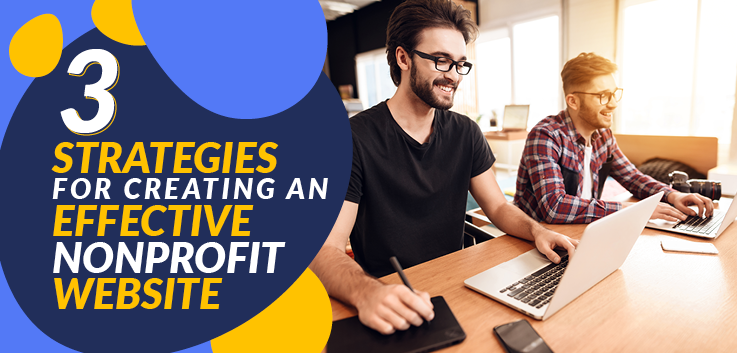Get More From Conference Participant Data: 3 Top Tips
As an association leader, you know how critical an annual conference can be to the success of your organization. Your conference might be the event that members look forward to all year as it provides opportunities to network, hear from influential speakers, and engage with exhibitors. Additionally, conferences can help your association build a stronger community and reach prospective members.
While they hold many benefits, organizing a conference is no small feat. They require significant investments of time, money, and effort. That said, your association will need to leverage all of its organizational skills to keep everything running smoothly. Behind every successful event are countless hours spent researching and booking venues, sourcing speakers, promoting and selling tickets, and communicating with exhibitors. So, when the conference ends, you’ll want to make the most of the relationships formed during the event.
Collecting data before and during the conference is the best way to take advantage of attendee participation. In this guide, we’ll explore strategies that will help you gather key pieces of information about attendees so you can personalize communications and improve future events:
- Offer multiple ways to engage.
- Send out post-conference surveys.
- Use an AMS with data analysis capabilities.
As you navigate the event planning and data analysis processes, remember that each of these tasks can be seamlessly completed with association management software (AMS). An AMS will streamline event planning tasks as well as ticket and merchandise sales, and it even offers interactive apps that attendees can use to guide them through the conference. Best of all, you can use your AMS to easily connect and analyze data about members and attendees.
Let’s dive in by exploring the best ways to gather data from your attendees.
Offer multiple ways to engage.
To ensure your association is able to collect useful data from attendees, offer as many ways to engage as possible. This might mean choosing a hybrid conference format so that people can either attend in person or online. Or, you might market the conference through multiple communication channels so they can choose how to engage with promotions.
As Fonteva’s guide to member engagement explains, a strong sense of engagement secures your organization’s relevance, boosts member retention, and encourages community-building. To reap these benefits and ensure attendees are active participants at your conference, consider using these engagement strategies:
- Organize low-stakes, casual activities. It can be difficult to “break the ice” during conferences, especially when attendees have little downtime between navigating from one session to the next. Leave room in the schedule for a few events designed to foster member-to-member connections. Popular ideas include networking lunches, games, or “unconference” sessions where participants can discuss topics of interest in a more casual setting.
- Hold interactive workshops. Break up long days of complex presentations with workshops. Allow participants to actively engage with the content or learn a new skill. Not only does this provide a change of pace and opportunities to interact with others, but attendees will become more marketable with new sets of skills and experiences.
- Set up digital forums. Using your AMS, organize discussion forums for the conference. Consider creating a general forum for the entire conference as well as forums for individual speakers or topics. Provide the forums in a mobile-friendly format. To further motivate attendees to participate, consider offering incentives for contributions from group members.
- Use live polling and Q&As. Feature these activities during and at the end of presentations to curb meeting fatigue, particularly for virtual attendees. When faced with interactive elements during presentations, listeners will shift into a more active role (rather than being passive observers). To encourage more peer-to-peer interaction, consider asking questions and sending members into breakout sessions to discuss.
Using these strategies, your association can deeply engage attendees and provide more positive experiences. Additionally, you can gather data through these interactions and use it to refine future conferences.
Send out post-conference surveys.
NXUnite’s guide to membership benefits defines them as “perks, services, and access that people receive when they participate in a membership program.” Think of conferences as one of these benefits. You want members to be satisfied with them, particularly if they are paying to attend.
The best way to know whether attendees were satisfied with a conference is to ask them. For organized, honest feedback, send out a post-event survey that asks them what they liked and what could be improved. Make sure to ask for details as needed and for any suggestions they have for the future. Even if they found your conference to be valuable, they might have an interesting topic in mind for next year.
When creating your survey, make sure to include questions about the following areas:
- Overall experience. Seek out high-level, general feedback by asking attendees to rate their overall experience at the conference on a numbered scale. Then, ask them to highlight the aspects of the conference that stood out positively, as well as any noticeable shortcomings.
- Sessions and content. Ask your attendees to highlight the sessions they found most engaging, timely, or interesting. Consider asking them to highlight specific speakers they enjoyed, too. When asking about the sessions or speakers they weren’t as engaged by, ask for a detailed response so you’ll know what to improve.
- Engagement. Get feedback from attendees about the quality of your networking and engagement opportunities. Ask if there were any they found particularly helpful or if they have any ideas about how to enhance them.
- Logistics. Request that attendees rate the registration process and ease of communication with your association. If the event took place in person, ask them how they felt about the venue and locating sessions and meeting areas in the space. If the event took place online, ask them about their experience navigating links or accessing additional resources.
- Suggestions. Ask attendees if there are any topics, themes, or activities they would like to see at future conferences. Make sure to ask a very general, open-ended question for any suggestions that don’t fit neatly into one of the previous categories.
Consider creating separate surveys for both staff and volunteers. While these surveys won’t necessarily help you reach more new members or secure additional renewals, they can assist in boosting staff retention and improving your volunteer program.
Use an AMS with data analysis capabilities.
After collecting data from before, during, and after the conference, you’ll need to use your association software’s data analytics tool to get a full picture of the conference. This data will reveal both your strengths and weaknesses, giving you a clear path toward an event that meets and exceeds the expectations of members.
The way associations use data will differ depending on their unique needs and goals. Here are a few specific examples of how conference data might be used to improve communications, future events, and organizational procedures:
- Using demographic data about a member, you send a personalized message to them promoting events and opportunities taking place in their local area.
- Before the conference, your association added a question to the registration form asking how registrants found out about the event. Then, you use these responses to understand which communication channels your audience prefers.
- Responses to your post-event survey show that attendees loved one of your speakers, so you pass the praise along and proactively invite them to next year’s conference.
- A few attendees recommend scheduling an optional happy hour each evening of the conference for networking purposes. When you implement the happy hour during your next event, participants give higher ratings for the “overall experience” and “engagement” categories.
Because this is just the tip of the iceberg when it comes to using your data, getting started can be overwhelming. It can help to compare feedback and suggestions against your association’s internal goals and assign each one a priority. Additionally, take into account the urgency of each piece of feedback and the number of people who made a similar suggestion or observation.
To ensure your event attracts new prospects and engaged members, make sure to promote the conference ahead of time and offer numerous engagement opportunities. Then, use your AMS to collect and analyze data from participants. Most importantly, make sure that your association uses the data it worked hard to get to actively learn and improve for the future.


 Guest blogger Holly Ross has spent seven+ years at the
Guest blogger Holly Ross has spent seven+ years at the 